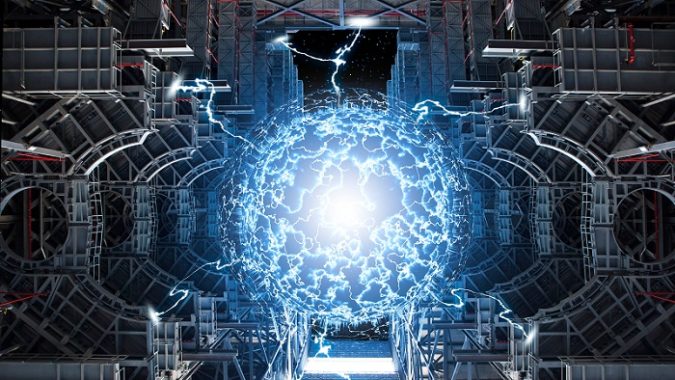The planning of electrical power supply today and in the future is a topic of discussion than impacts over six billion people on the planet right in their homes. The needs are vast, the issues complex, and the solutions varied. For example, industry analysts estimate that global power consumption will nearly double by 2050[1], with electricity demand growing from 19 percent now to 30 percent by mid-century. By 2036, renewable energy sources—mainly wind and solar—are forecasted to provide nearly half of the global energy supply[2]. According to Carbon Tracker, on- and off-shore wind power alone could eventually capture more than ten times the global energy consumption of 2019. Nuclear power today generates about 10 percent of the world’s and more than half of the U.S. electricity needs. Statistically, it is one of the safest[3], carbon-free[4], and most efficient[5] electricity production sources used today.
Data like this illustrates the breadth of energy issues the world’s electricity producers face in addition to the information and insight needed to continue to operate existing facilities safely and efficiently.

At Électricité de France (EDF), the second largest electric utility in the world—headquartered in Paris, France—company analysts and engineers use high performance computing (HPC) to understand and predict customers’ power consumption, for design of new generating facilities, and to simulate components and systems for safety and regulatory compliance—especially for nuclear power generating facilities.
“When it comes to our facilities, our number one concern is safety,” Alain Martin, head of Scientific Information Systems at EDF, stated. “Many things are difficult or complex to measure within a nuclear power facility, so we simulate evolution of various components using computation. These include components of the Reactor Pressure Vessel (RPV), steam generator, primary pump, among others. The higher the resolution of these simulations, the more detail we understand about the components’ conditions, operational efficiency, and reliability—all key factors to ensure safety.”
Every few years, EDF upgrades and replaces HPC systems to address the need for ever-higher resolution simulations and, now, to support emerging artificial intelligence (AI) studies that will deliver greater insight into their resource needs and operations. EDF’s Gaïa HPC cluster, designed around Intel Xeon Gold 6140 processors, was installed in 2018. In late 2020, EDF began deployment of Cronos, an HPC cluster with 4.3 Linpack petaflops (7.1 petaflops theoretical peak).
Cronos is among the fastest 100 supercomputers in the world[6]. Built by Atos, it is a BullSequana X system with 3,400 Intel Xeon Platinum 8260 processors. The new system will help EDF manage existing power facilities, while predicting future needs and engineering new resources to help them be CO2 neutral by 2050.
In addition to running simulations to support safety and nuclear regulatory compliance, HPC also helps engineers design systems and understand risks of other types of power plants, such as solar, off-shore wind, and hydro. Complex and high-precision calculations across multiple physics are needed to design efficient, reliable, and safe facilities. Additionally, predictive maintenance analysis and component end of life tracking help keep facilities running optimally and maximize useful life.
“We use many types of open source and proprietary codes for studies in mechanics, hydraulics, neutronics, physics, and Multiphysics,” Cyril Baudry, Scientific Information Systems Architect at EDF, added. “We know these codes very well, such as Computational Fluid Dynamics (CFD). They are parallelized and highly scalable codes able to process large datasets. Over the decades that we have operated facilities, we continually expand our datasets every year, demanding more and more computing resources to process them in reasonable time and gain insight from them.”
“We run many parallel workloads, so more cores give us more capacity to run simulations,” explained Baudry.
Memory bandwidth and processor core clock frequency have been limiters for the high-performance workloads EDF engineers run. Cronos’ processors give them more memory channels and higher memory bandwidth compared to previous generation processors. Using CPUs with fewer cores per socket gives Cronos higher maximum frequencies than larger processors.
Cronos went into production in Q1 of 2021. Users worked on optimizing their codes and running simulations, while also developing emerging workloads using machine learning.
“We are just beginning to explore machine learning workloads,” Baudry concluded. “We are exploring AI to use for predictive maintenance, electrical consumption planning, cybersecurity, social media analysis, to name just a few. It is a new area for us.”
Simulating and predicting future energy needs, designing and managing new facilities around nuclear, wind, solar, and hydro sources, and analyzing power plant component evolution requires large-scale supercomputing. With Cronos, EDF has the resources analysts and engineers need for traditional data analytics and to leverage the capabilities that AI and machine learning can bring to scientific insight and business efficiency and leadership.
Électricité de France (EDF) is at the heart of worldwide energy supply concerns, both in terms of planning capacity and production. The second largest electric utility in the world, EDF has the capacity to generate over 120 gigawatts—90 percent of it free of CO2 emissions. EDF designs, builds, and manages various types of power facilities, including nuclear—it operates 58 nuclear power plants—off-shore wind, hydro, and solar. It relies on supercomputing to analyze and understand many of the pressing issues it faces to supply the world community with safely and efficiently generated power.
Ken Strandberg is a technical storyteller. He writes articles, white papers, seminars, web-based training, video and animation scripts, and technical marketing and interactive collateral for emerging technology companies, Fortune 100 enterprises, and multi-national corporations. Mr. Strandberg’s technology areas include Software, HPC, Industrial Technologies, Design Automation, Networking, Medical Technologies, Semiconductor, and Telecom. He can be reached at [email protected].
[1] https://www.energylivenews.com/2021/01/18/global-power-consumption-to-almost-double-by-2050/
[2] https://www.mckinsey.com/industries/oil-and-gas/our-insights/global-energy-perspective-2021
[3] https://ourworldindata.org/safest-sources-of-energy
[4] https://www.statista.com/statistics/1003242/nuclear-industry-safety-accident-rate-us/
[5] https://www.energy.gov/ne/articles/nuclear-power-most-reliable-energy-source-and-its-not-even-close



























































